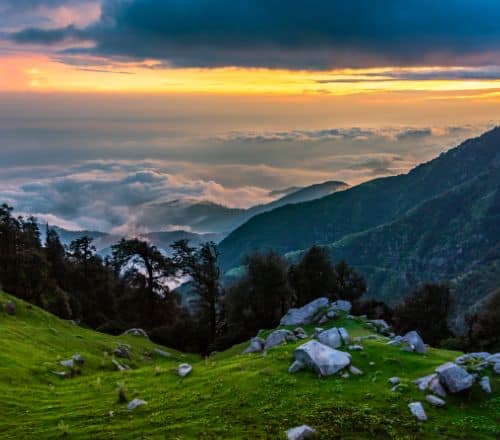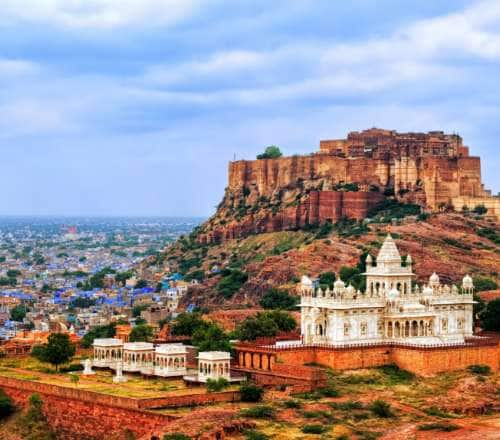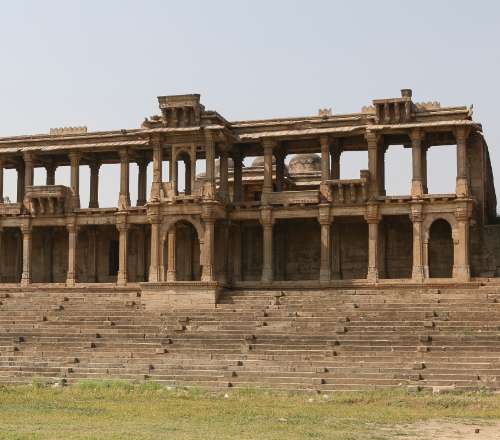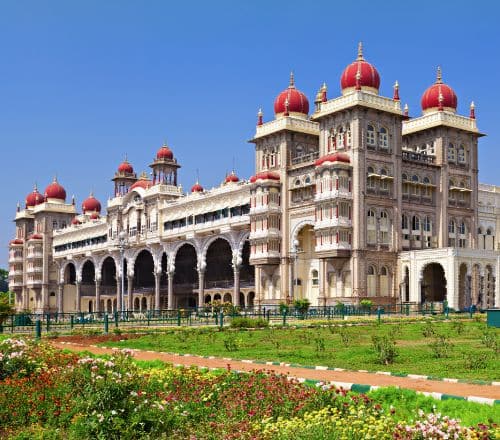Stay logged in to proceed with bookings, orders and offers.
On changing the terminal, you will loose items in your cart. Are you sure you want to change your terminal?
This 8,000-year-old city is a slow burn for the intrepid explorer, with its sacred spots, ruins of centuries-old mansions, craft tradition, and aromatic salted peanuts.
I have a bittersweet relationship with Bharuch. Having spent 19 years here on and off, I have seen it evolve in a rather unfair way. Its history has always intrigued me and its heartwarming people have always been welcoming. But I have also seen the town being neglected when it needed help. There have been futile attempts to undo the neglect by establishing an urban sprawl – what the city needs is immersive healing.
Known as Bhrigukachcha in mythological tales, Bharuch was known as "Broach" during the British era. In its 8000-year-old history, Bharuch was controlled by many dynasties, including the Guptas, Gurjars, Marathas, Rajputs, and Mughals. Moreover, its trading chronicles drew the Greeks, Persians, Arabs, Romans, Dutch, and English to Barygaza, the ancient port of Bharuch, for spices and silk.
The oldest settlement in Gujarat and the second-oldest city in India after Varanasi, Bharuch has always been a prosperous town. Situated along the banks of the Narmada river, the city served as a gateway to Central and Northern India from the West through the Gulf of Khambhat. It often comes to my mind that even though Bharuch played such an important role in ancient Indian history, why does it lie unattended now? Why is its history not celebrated anymore? Why is it unable to attract visitors from across India?
I've had the privilege to live in this town and have taken the time to slowly explore every nook and cranny of it. Yet my questions remain unanswered. However, I've come to realise that this might be because there is not much left for people to see as evidence of what has been recorded in history.
For instance, the port of Barygaza – named so by the Greeks – was a key trading outpost that saw traders from various countries. However, today, it cannot be seen anywhere on the map. The ruins of a fortification and weathered doorways, which were built during the reign of Siddhraj Jaising of the Solanki Dynasty, can be seen standing in neglect around Bharuch. Some of the old houses and havelis here still bear carvings dating from the 17th to 20th century, reminiscent of the foreign merchants who once inhabited Bharuch. However, the contrast between the state of these relics today and the glorious historical accounts is rather appalling.
Bharuch will never be a typical tourist destination because it is for the intrepid traveller. Just like a work of art in a museum only understood by select artists, Bharuch and its 8000-year-old legacy will interest those with an adventurous mind and spirit. You never know what you find around the bend in this city! Walk with me as I take you on a journey through the impressive parts of this forgotten city.
Read More
Read Less
Just like Varanasi, in Uttar Pradesh, you will find clusters of temples in and around Bharuch. The Bhrigurishi Temple is among the most important of these shrines. Located on the sacred banks of the Narmada river, this temple is situated in the Dandia Bazaar area of the old quarter in Bharuch. It is dedicated to Sage Bhrigu, one of the seven eminent sages in Hindu mythology, who founded Bharuch. The beautifully carved temple was built by the Marathas in the 17th century.
There is a mythological tale associated with this temple. Legend has it that around 8,000 years ago, he arrived here sitting on a tortoise and settled with his 18,000 disciples. He called the place Bhrigukachcha, where the word kachcha means tortoise in Sanskrit.
Another interesting aspect is that Bhrigu Rishi laid the foundation of the city on the auspicious day of Basant Panchami. Hence, Bharuch celebrates its birthday on the occasion of Basant Panchami every year.
Connecting Bharuch with the southern part of Gujarat, the 1.4-km-long Golden Bridge was part of my daily commute. I was lucky to catch stunning sunset views from this bridge every day while returning home. While driving, I would often think about its distinct architecture, its strength, and why the British were so determined to build this bridge.
The construction of the bridge began in 1861. However, the mighty Narmada river washed away parts of it during floods. This happened an unbelievable seven times! But there was no other way to connect the southern part of Gujarat, especially Mumbai (Bombay, then) than to construct this bridge. Hence, well-known British architect Sir John Hawkshaw re-designed the bridge blueprint and its construction resumed in 1877. The bridge was completed in May 1881.
The solid iron bridge took great effort to rebuild. The total cost incurred for this project was so high that a bridge of gold could have been fabricated at the time! That is why it is known as Golden Bridge.
Whenever we visit any of our friends or relatives or vice versa, we gift them packets of salted peanuts. This tradition of gifting salted peanuts is rather ubiquitous in Bharuch. Interestingly, peanuts are not cultivated in Bharuch; it is transported from Saurashtra to the city for the final stage of processing. There is just something unique about the quality of soil in Bharuch which makes the peanuts so tasty and famous around the world. Irrespective of whether you are travelling by bus, train, or car, as you near Bharuch, you cannot miss the unmistakable salty, earthy aroma of peanuts. And for me, it fills my heart with nostalgia.
In 1860, a convict from Bharuch – who was jailed in the Andamans – learned the craft of Sujni weaving from another Assamese convict. When he returned to Bharuch, he utilised his weaving skills and started creating Sujni blankets. Today, this art form is struggling to survive, with only three descendant families trying to preserve this craft.
The technique of Sujni weaving needs no fabric or stitching. Two weavers sit next to each other at the loom and two spools of different coloured threads are passed back and forth. In the first pass, tiny squares are formed which are filled with cotton and the next pass then closes the squares to secure the cotton. This process is repeated to make a Sujni that can be used as a blanket, bed cover, or a throw.
My family has been using these blankets on cold winter nights for years now. I try to raise awareness about this craft form as often as I can because Sujni blankets are the pride of Bharuch.
Bharuch has been celebrating Megharaja festival for over two centuries. Every year, on the ninth day of the month of Shravan, the chhadidars (stick experts) of the Bhoi community swing huge 30- to 40-ft-tall poles, weighing around 150 kg, in different ways. This unique custom is said to be symbolic of a mother and her child. the festival is dedicated to Megharaja, the God of Rain. Locals craft a huge idol of the deity using clay from the banks of the Narmada river. It is then immersed in the holy river at the end of the festival.
When I was a kid, my mother used to take my sister and me to this unique fair of Chhadi Nom, the literal translation of which is "the stick on the ninth day". I had no idea about the importance of the festival back then but I was mesmerised by the huge number of people that would gather to witness the show. Navigating through the crowd, my mother would find the highest point on the porch of a house from where we would watch the show. After all these years, I still remember the thrill of watching the skilled chhadidars perform a balancing act with the pole on their teeth, foreheads, chests, or shoulders.
Bharuch possesses a distinct cultural character. Although it is well-known for its temples, it is also home to the Juma Masjid which was built in 1321; a 200-year-old Roman Catholic Church; a Parsi Agiari which was constructed in 1760; and also a Chadar Sahib Gurudwara marking the visit of Guru Nanak in Bharuch during his journey as a missionary. These historical sacred spots are a testament to the syncretic culture of the city.
During the end of the 17th century, Bharuch was ransacked twice. However, it recovered so quickly that locals coined a proverb in Gujarati for its enduring quality of bouncing back from difficult times. It is called "Bhangyu Bhangyu Toye Bharuch". I refer to this proverb every time I miss Bharuch, its uniqueness, and it's adorable people. I may have left Bharuch but the town will always hold an important place in my heart.
Bharuch is not completely forgotten, but it is not as famous as it should be. Notwithstanding its strength in the face of the struggles that it has endured, the city cries for rehabilitation. Sometimes I think if the restoration work had been carried out in time, Bharuch would have been a historical hotspot on the tourist trail. I don't know if it's the city that wants to be left alone or if it is the possessiveness of the Narmada river which always messes with the restoration work and wants Bharuch to be only hers.





The Adani One expressly disclaims all liability, direct and indirect, in respect to actions taken or not taken based on any or all the contents of this Blog. The Blog is an opinion of the contributor based on the collation of data from various sources and is provided only for information purpose. Adani One does not canvass, advertise, solicit, invite or induct for any product, merchandise, information, brand or any other materials mentioned in the Blog, nor does it obtain any monetary benefit from the same. Reader is advised to read and apply his/her intellect and discretion in this regard. Any Intellectual Property mentioned in this blog belongs to the rightful owner. We do not intent to claim any interest over the same.